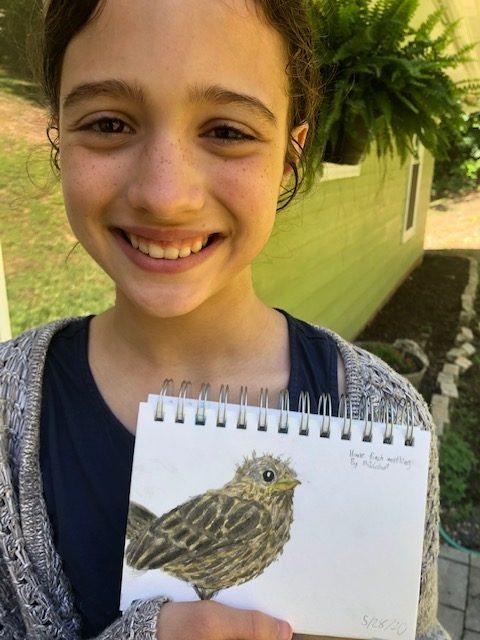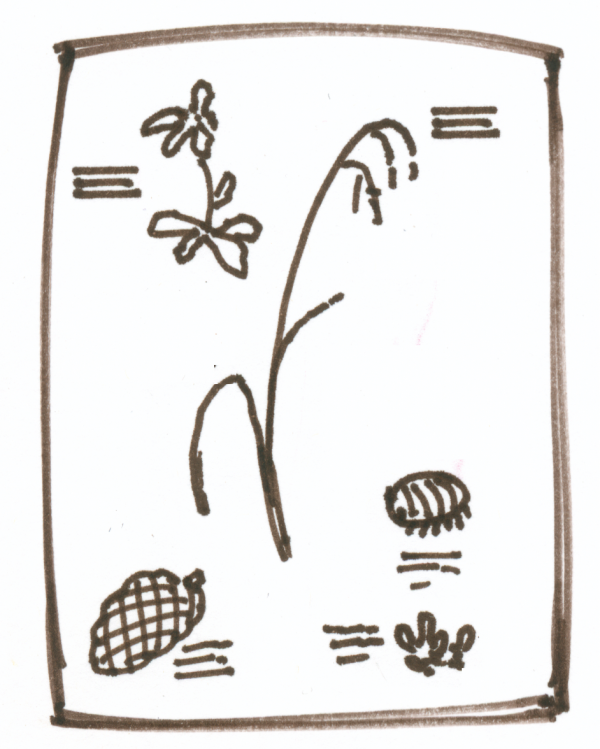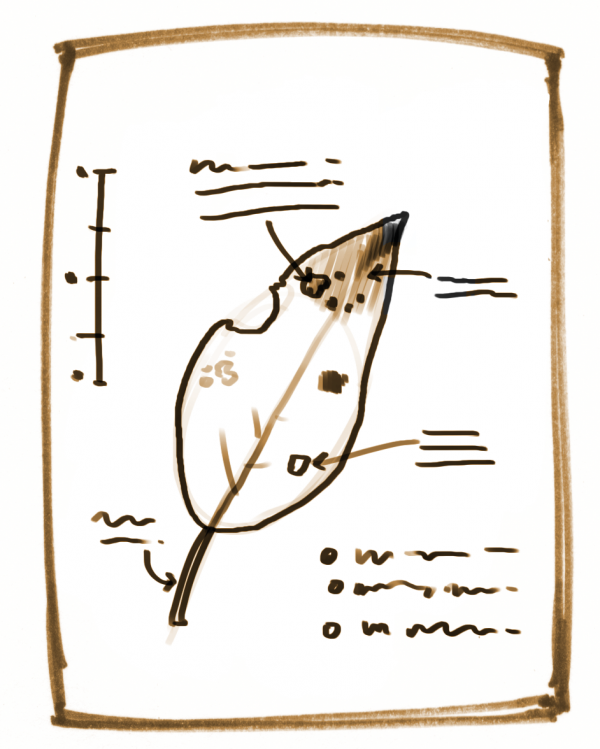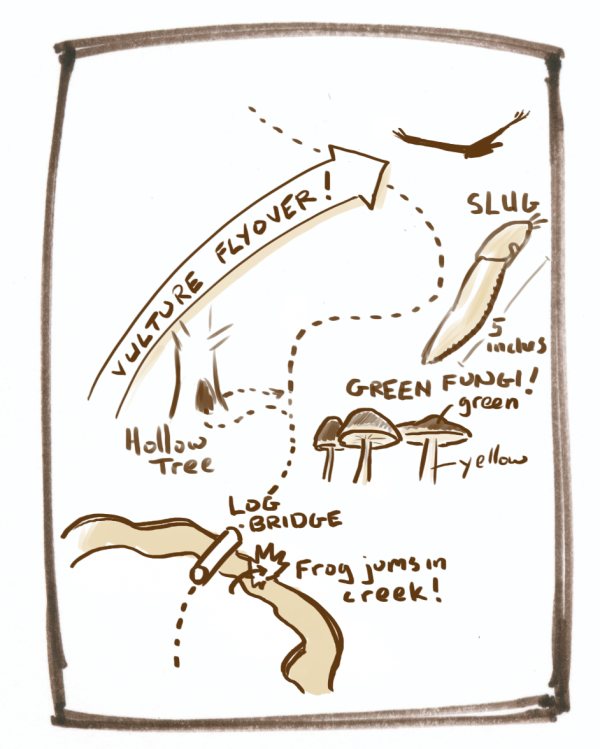Activities
John Muir Laws and Emilie Lygren, authors of How to Teach Nature Journaling, developed 31 activities that engage learners of all ages in nature journaling and outdoor learning. Some activities offer opportunities for learners to build a specific set of journaling skills, while others focus their observations on a specific part of the natural world. The activities have been designed to offer structure and support to guide students’ observations and journaling, along with opportunities for student choice and autonomy. Discussion questions included in each activity offer a range of ways to deepen learning and reflection.
Check out Introducing Journaling Activities and Supporting Student Engagement During Journaling Activities for strategies to successfully facilitate journaling activities. See the Educator Support section for ideas on integrating journaling activities into longer lessons and learning experiences.
Activities are organized into the following categories:
Bonus: Free Video Series: The Nature Journal Connection
This free series of 40 short videos created by John Muir Laws and the Children’s Creativity Museum is an excellent course for beginning nature journalers of all ages, from 8 up. It is a great way to teach yourself, or share with your classroom or homeschool students. The Nature Journal Connection
FREE HANDOUT DOWNLOAD!
Download or order printed copies of our new zine: Your Quick Start Guide to Nature Journaling. This is a helpful handout for new nature journaling students age 6 and up. Now available in Spanish and French, too!
Getting Started: Introductory Journaling Techniques and Activities
Activities in this section build foundational journaling skills and get students excited to keep at it. We recommend beginning with I Notice, I Wonder, It Reminds Me Of. It is always the first activity we do when we take a group of students outside for the first time because it sets a tone of inquiry, curiosity, and excitement, and offers observation tools that can translate directly to the journal page. The other activities in this section are similarly accessible and approachable. They also introduce techniques students can include in future journal entries.
I Notice, I Wonder, It Reminds Me Of
In this foundational “observation routine,” students use three prompts to engage with natural objects and build inquiry skills in the process. Go to activity
Comparison
Students observe two objects in the outdoors (e.g. flowers, trees, rocks) and sketch them side by side, noting differences and similarities. Go to activity
My Secret Plant
Students record observations of a plant using words, pictures, and numbers, then challenge a partner to find the plant using their notes. Go to activity
To Each Its Own
Students draw and describe a natural object, then play a matching game in which they pair the objects to their peers’ journal entries. Go to activity
Zoom In, Zoom Out
Students sketch an object at three scales (magnified, life size, and distant) and reflect on the kinds of observations made at each level. Go to activity
Observation and Natural History
Each place holds unique mysteries and little wonders. The activities in this chapter guide students to slow down and deepen their relationship with place through studying species, narrowing their focus, and focusing on patterns and processes. As students look through different lenses, from studying what falls within a circle of string to observing flowers as they bloom, they will tune in to the processes at work around them and notice biologically significant details that can deepen their understanding of how the natural world works. Ideal for teaching life science or building students’ sense of place, these activities focus on observing organisms and attuning to details of the landscape.
Timeline
Students explore plant development by sketching buds, flowers, and fruit. Then they discuss possible functions of plant parts. Go to activity
Collection or Field Guide
Students make a field guide or “collection” of things within a focused category, such as leaf types, rocks in a stream, things that are red, or tracks. Go to activity
String Safari
Students observe a world of wonders within the boundaries of a loop of string, then use maps, drawings, and notes to describe what they found. Go to activity
Animal Encounters
This activity offers a routine for translating brief encounters with animals into rich journal entries. Go to activity
Species Account
Students choose one species that they can readily observe, and document as many details as they can about it through direct observation. Go to activity
Forest Karaoke: Transcribing Birdsong
Students describe bird songs in their journals using writing, drawing, diagramming, and numbers. Go to activity
Soundscape Maps
Students listen to the soundscape around them, then diagram and map it using symbols, shapes, and colors to graphically describe sounds. Go to activity
Inquiry, Investigation, and Scientific Thinking
Intentional curiosity and tools to pursue questions are some of the building blocks of inquiry. Scientific investigation activities build students’ skills in asking varied questions, and offer some approaches for dancing with the questions they ask. This chapter offers a deeper dive into scientific thinking. Activities offer inquiry skills and questioning scaffolds, reveal natural patterns and processes, and guide students to create visual explanations. These practices translate directly to the journal page and will deepen the investigations students make and the understandings they come to.
Mysteries and Explanations
Students look for nature mysteries and pose possible explanations for what they find.
Go to activity
Questioning Questions
Students observe a natural phenomenon and use scaffolds to ask varied and interesting questions.
Go to activity
Mapping
Students study patterns in the outdoors by creating maps of vegetation patterns, wildlife evidence, or landscape features. Go to activity
Landscape Cross Section
Students map shifts in the location of plants or animals across an area, such as the slope of a hill or a transition from shore to pond. Go to activity
Phenomenon Model
Students observe a natural phenomenon, describe it with a diagram, then make explanations for the mechanism at work. Go to activity
Team Observation
In small groups, students work collaboratively to observe and journal about one subject, then share what they learn. Go to activity
Words: Articulated Thought and Storytelling
Writing is a powerful way to capture our observations. It also pushes our thinking and helps us articulate our ideas. Activities in this chapter offer support for how students’ writing can appear on the page, for building visual and written communication skills, and considering how to integrate writing with pictures and other forms of communication. Writing is also a way to reflect, connect, and find the stories that emerge from our lives. This chapter also includes activities that focus on storytelling—guiding students to build narratives from nature observations, call on their life experiences, and invite themselves onto the page.
Event Comic
Students use words and pictures to create a true-life “nature comic” and tell the story of an event they have witnessed in the outdoors. Go to activity
Event Map
Students draw a treasure map as they move through an outdoor area, highlighting the cool or interesting things they notice along the way. Go to activity
Poetry of Place and Moment
Students have the opportunity to write poems that record the details of their surroundings and their personal experiences and reflections. Go to activity
Sit Spot
“Find your sit spot and see what comes.” This activity offers students the opportunity to engage with the outdoors on their own terms. Go to activity
Writing to Observe, Writing to Think
Students focus on a subject in nature and practice using different writing approaches to capture their observations and thinking. Go to activity
Pictures: Drawing and Visual Thinking
Anyone can learn to draw. Practice and learning illustration techniques help students improve more quickly and help them draw what they see and imagine. This chapter includes drawing exercises, practice skills, and techniques for breaking down and diagramming complex objects. Combining drawings, diagrams, maps, cross sections, and other visual elements with structured page layouts builds students’ visual communication skills. Activities in this chapter also guide students to think about page layout and structure and how to best show their thinking on the page.
Infographic
Students use words, pictures, and numbers to create a nature infographic, then do further research and add to their entries. Go to activity
Photo, Pencil, and Found Object Collage
Students make a collage using words, drawings, and a photo, then reflect on approaches for recording data. Go to activity
Inside Out
Students use drawings to show the internal and external shape of a fruit or a mushroom, then reflect on using diagrams to communicate. Go to activity
Nature Blueprints
Students observe a complex natural object, break it down into component parts, and create a labeled diagram to reveal its structure. Go to activity
Numbers: Mathematical and Quantitative Thinking
Numbers reveal patterns and significant details. Students can learn to find the numbers behind their observations through participating in the activities in this chapter. Quantifying distances, numbers of species, or processes of change will add another layer of understanding and intrigue to students’ journal pages. Activities in this chapter offer structures for gathering and representing quantitative data in journaling. Some activities focus on how to find the numbers behind any observation; others offer structures for gathering quantitative data on natural processes or using numbers to construct explanations and gather evidence.
Biodiversity Inventory
Students record the diversity of species in two study areas and use graphs and diversity indices to describe and analyze the data. Go to activity
Hidden Figures
Students count, measure, time, and estimate different subjects in nature, practicing practical quantification skills in their journals. Go to activity
Timed Observations
Students observe the behavior of a group of animals and use a sample protocol to quantify the frequency of different behaviors. Go to activity
Change Over Time
Students describe a growing plant, a decomposing object, or a landscape feature as it changes over multiple observation sessions. Go to activity
































